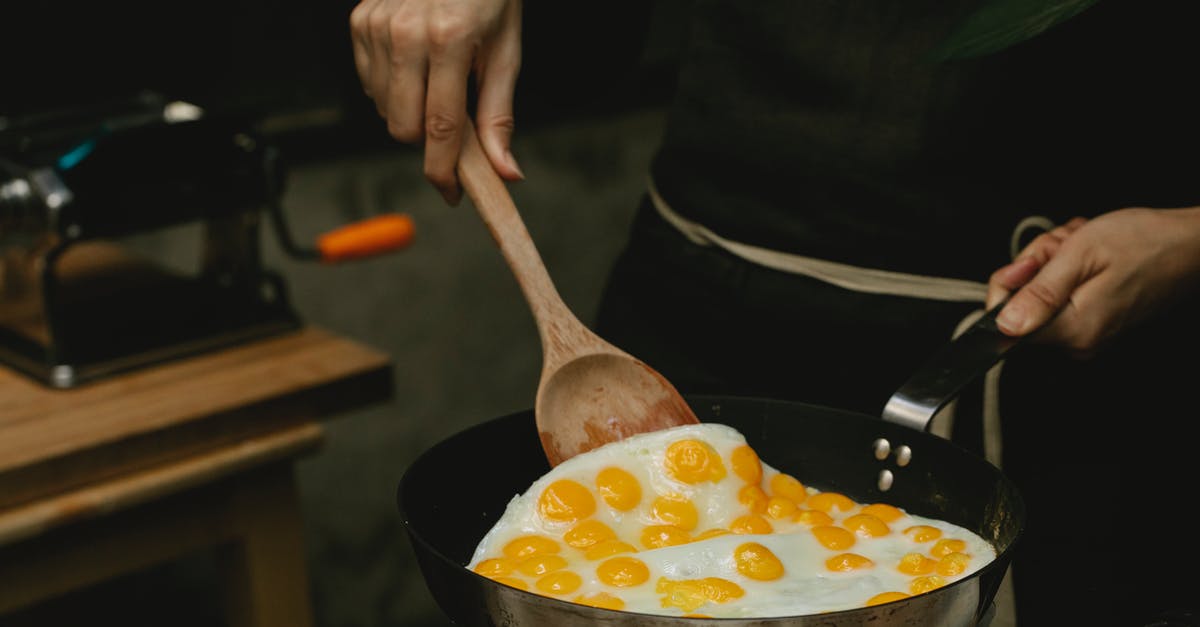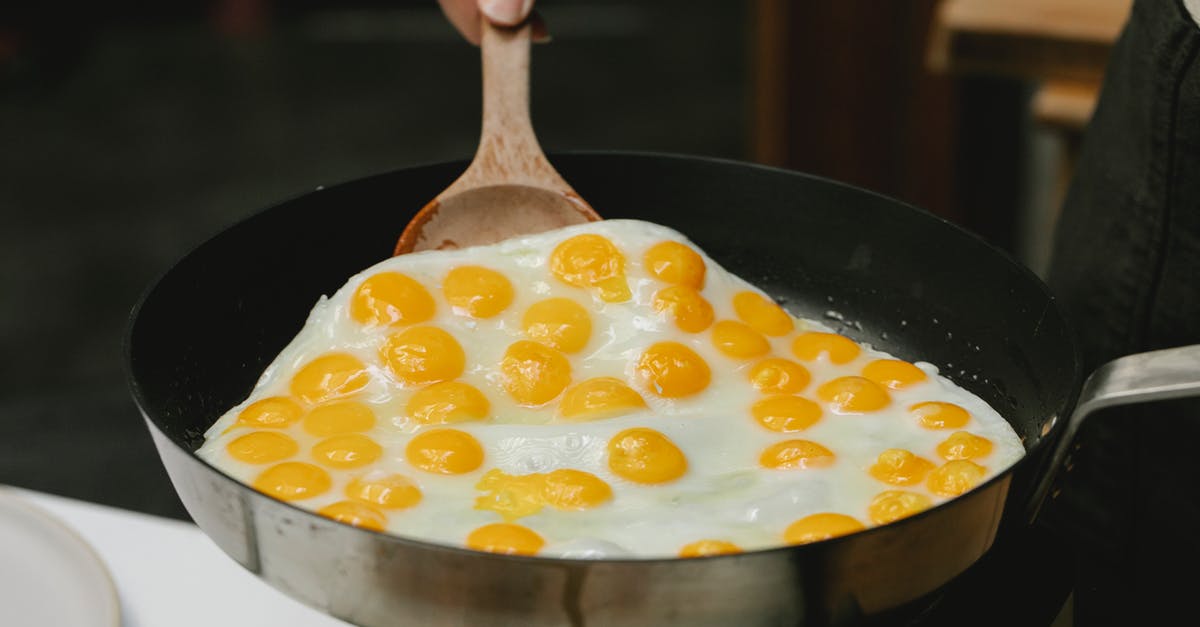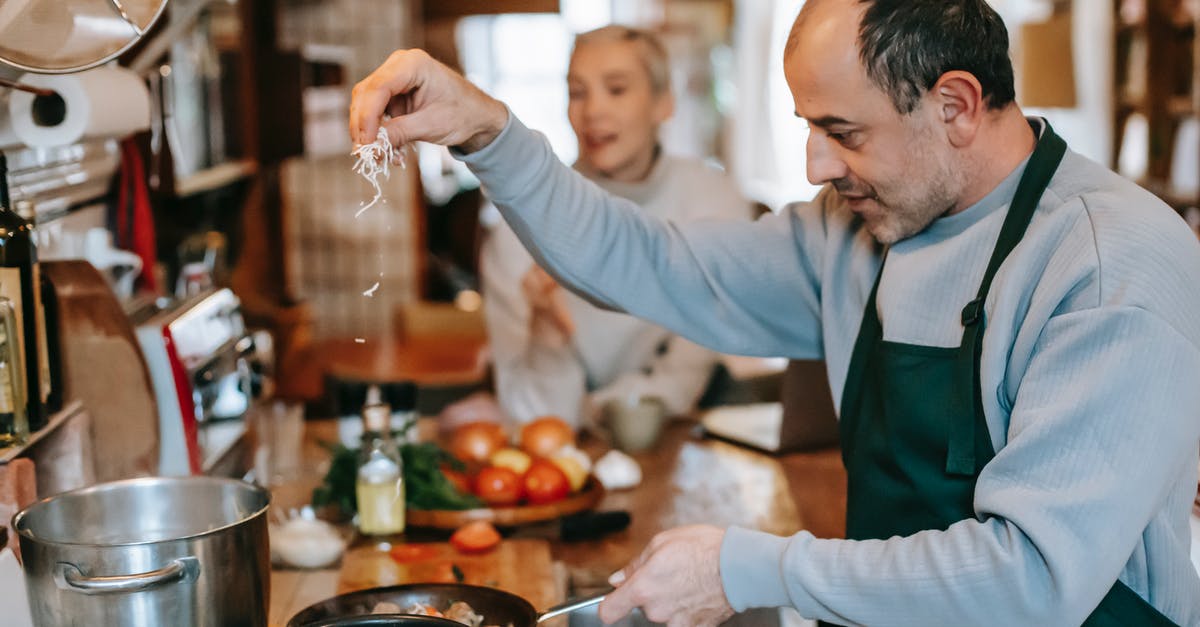Why does my food turn out poorly using an All-Clad Stainless-Steel Fry Pan?

I have an All-Clad frying pan, the precise one shown below:
http://www.amazon.com/gp/product/B00005AL5F

I made this purchase out of curiosity after reading about the benefits of this professional grade cookware (from the above Amazon link):
- Beautifully polished, magnetic stainless exterior layer.
- Pure aluminum core that not only covers the bottom of the pan but also extends up the sides. This allows for great heat conductivity as well as an even heat distribution so you won’t have "hot spots" when cooking.
- Stainless-steel interior layer/cooking surface.
- Long, polished stainless, stay-cool handles.
- Sturdy, non-corrosive stainless-steel rivets won't react with foods.
- Polished stainless-steel lids fit evenly with the pan’s edges to seal in flavor of your foods.
- The All-Clad Stainless collection is compatible with an induction stovetop (with the exception of a few pieces) in addition to gas and electric stovetops.
- The Stainless collection is dishwasher-safe, excluding pieces with a nonstick cooking surface.
However, as a novice cook, I can't seem to cook anything as well using this pan compared to a non-stick teflon pan. Food seems to stick or become overcooked easily or just not turn out well.
Have I fallen victim to a weak product sold on marketing hype? Or am I simply too novice to properly utilize this pan? What cooking skills might I be missing to properly utilize this tool? What tools should I be using instead?
What reasons might there be for me sucking at using this pan?
Best Answer
You've got a great pan and in a short time I'm sure you'll come to love it.
When using a standard pan (one without non-stick coating), heat your pan dry over high heat until you can hold your hand about 6-inches above the cooking surface and feel the heat radiating upward. This allows the tiny cracks and crevices that are imperceptible to the bare hand to expand and when the oil is added, it will coat and create a more even cooking surface.
Add just enough oil to lightly coat the surface. Adding to much oil leads to pan-frying which is fine if you're frying chicken but not what you want when searing and sauteing meat. There should just be a thin film across the bottom of the pan. An additional benefit to first heating the pan is the fact that it will actually take less oil to coat the pan due to the decreased viscosity. When the oil hits the hot pan it will instantly heat and should shimmer across the bottom like water on a freshly cleaned windshield.
You don't put the oil in the pan first because the longer oils and fats heat the quicker they break down and smoke. If you were to add cold oil and cold food to a cold pan and then start heating, you just end up with a big sticky mess.
Make sure you're prepared to add the food to the pan once the oil goes in otherwise the oil will start to burn.
The issue with burning and overcooking is going to be a matter of controlling the heat. Start searing and sauteeing over high heat because as food is added it will suck a good deal of heat from the pan. If it isn't extremely hot to begin with you'll end up with a steaming mess of gray colored meat or vegetables that aren't doing much cooking. Once the meat is browned but needs further cooking you can always turn down the heat to prevent excessive browning and crusting before the interior is done.
Even if you aren't planning to do a pan sauce, or if you've burnt what was cooking in the pan, you'll still want to deglaze with some water while the pan is hot (you can reheat it if it has already cooled down) so that you can scraped up the cooked on bits more easily and have less scrubbing to do when cleaning the pan.
Pictures about "Why does my food turn out poorly using an All-Clad Stainless-Steel Fry Pan?"



Quick Answer about "Why does my food turn out poorly using an All-Clad Stainless-Steel Fry Pan?"
Make sure your pan is hot enough before adding the oil and food. You want it to be hot enough to cook the outside as soon as it lands, instead of letting the food cook to the pan by sitting on it and coming up to temperature.Why is food sticking to my all clad pan?
Make sure the pan is fully heated before adding any butter or oil. And make sure the oil or butter is hot before adding the food. Also, a good skillet like this one won't ever be as perfectly nonstick as a true nonstick finish pan. You will get little bits of food and scraps left over in the pan after cooking.Why does everything stick to my stainless steel pan?
Stainless steel pans look smooth, but the cooking surface actually has tiny pores. When you heat the pan, the steel expands and the pores shrink. The shrinking pores grip onto the food, causing it to stick. To prevent sticking, preheat the pan to medium, then add ample oil, then add the food.How do you stop food sticking to a stainless steel fry pan?
Stainless steel can be used to cook all kinds of food without exception, including meat, fish and even eggs! To prevent food from sticking to stainless steel, simply pour a few drops of water into a stainless-steel pan over high heat.Why does my food burn in stainless steel pan?
Any food cooked on a hotspot without turning, stirring, or tossing will eventually burn or stick to the pan. So, Erika, if you have a powerful stove, and a recipe calls for medium-high heat, try lowering the heat to medium and keep the food moving around to prevent it from staying in a hot or cold spot.More answers regarding why does my food turn out poorly using an All-Clad Stainless-Steel Fry Pan?
Answer 2
Negative, you have not fallen victim to a weak product as far as I know. My all-clad pan works rather well, but I can't be certain it's as heavy as yours. Heft when it comes to a nice stainless pan is important.
"Food" seeming to stick, be overcooked, or "not turn out well" is a little vague however. It's extremely difficult to give good advice based on that info. Depending on what you're trying to cook in your new pan, you could have a number of different problems.
With the information given however, I would recommend:
Don't be a Nancy when it comes to the heat. If you're browning/searing things, that screaming sizzle is a good thing.
Use enough butter and/or oil. So long as the pan is hot enough, don't skimp on the lube. That's never a good idea.
Keep in mind a bit of sticking and near-burning is a good thing if you're planning on ending with a pan sauce. That's why you want a non-non-stick pan. There's nothing to deglaze if there aren't crispy bits on the bottom of the pan.
Practice, expect to screw things up from time to time, and don't be discouraged. Being a new cook sucks until you get the hang of it.
-><-
Answer 3
Make sure your pan is hot enough before adding the oil and food. You want it to be hot enough to cook the outside as soon as it lands, instead of letting the food cook to the pan by sitting on it and coming up to temperature.
https://rouxbe.com/tips-techniques/723-the-water-test Heat the empty pan, once heated, add a drop of water. If the water stays in a single drop and glides across the pan, you're probably ready to add the oil. If the water splits into smaller drops, it's not hot enough. This is caused by the water that first touches the pan immediately vaporizing, the rest of the drop floats on the steam.
Great videos on pan frying: http://rouxbe.com/how-to-cook/pan-frying
Answer 4
You also need to use the correct oil. The poster that spoke of using a whole stick of butter was never going to succeed, butter burns at too low a temperature to saute, and for really hot cooking so does olive oil.
I've been using grapeseed oil lately with good success for really hot work, it has a really high smoke temperature. Chinese cooking uses peanut oil, which also has a high smoke temperature. Of course, some folks are sensitive to nuts, so that's an issue with peanut oil.
Olive oil is great for medium temperature frying tasks.
I agree that you need to get the pan hot before adding the oil, and be ready to hit the hot oil with the food almost instantly, before the oil smokes.
Answer 5
Stainless is fantastic for sautéing. The trick is to preheat the pan (you can do the water test show n above - although avoid heating too high for fear of warping - this is outlined in the All Clad literature). I use regular olive oil (not extra virgin-smoking point is too low) AND butter. The oil raises the burning point of the butter. Plus if you are making a sauce from the fond it will taste better with the oil/butter combination. Furthermore, any meat you sauté must be a room temperature. This is called tempering. Meat will brown and cook more evenly. I have even fried eggs in my stainless pan. The trick is butter and eggs at room temp. One of the things I do if I am preparing a sauce with the fond is to heat the wine in the microwave ahead of time (not too long). Renowned chef, Raymond Blanc, recommends simmering your sauce-wine ahead of time to remove the alcohol but do only until alcohol has been driven off.
Hope that helps.
Answer 6
I bought a similar calphalon pan, and had the exact same experience. I could put a whole stick of butter in the damn thing, and everything stuck to it anyway. Omelette pan? In what dream world? Fricking fried chicken stuck to it, eggs were wholly impossible. I used it for a while, because I'd spent so damn much money on it, but eventually I gave up and threw it away.
These days I only use cast iron, and I'm much happier.
Sources: Stack Exchange - This article follows the attribution requirements of Stack Exchange and is licensed under CC BY-SA 3.0.
Images: Klaus Nielsen, Klaus Nielsen, Gary Barnes, Gary Barnes
